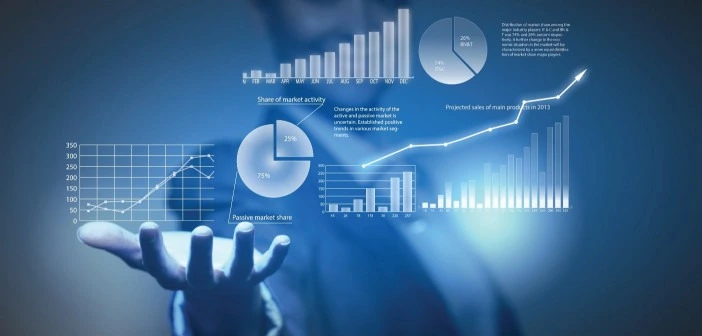
Data Analytics involves various steps of data manipulation and processing to arrive at structured knowledge from unstructured information. It is a blend of business intelligence, statistical, and computer science concepts applied to developing actionable insight.
Data is first collected from primary or secondary sources, such as transactional databases, sensors, APIs, or web applications. Afterward, the quality, completeness, and granularity of the data play a crucial role in determining the accuracy of analysis. Moreover, modern analytics platforms now place a strong emphasis on data governance in order to ensure consistency, security, and reliability throughout the pipeline. Ultimately, these measures help create a stable foundation for accurate and trustworthy insights.
The most common process involves cleaning, normalization, encoding, and scaling to prepare datasets for model development or visualization. Detection of outliers, imputation of missing values, and standardization of variables are intrinsic duties under data integrity.
Analytical Techniques
Data analysis techniques range from simple statistical methods to advanced machine learning methods.
- Descriptive Statistics provide a summary of data on the basis of statistics such as mean, median, standard deviation, and correlation.
- Inferential Statistics infers from samples to a population to estimate population properties.
- Predictive Modelling applies regression, classification, or clustering to predict or identify patterns in the future.
- Prescriptive Modelling extends predictive analysis by recommending actions that optimizes or minimizes objectives.
Dimensionality reduction techniques like Principal Component Analysis (PCA) are employed in reducing high-dimensional data without the loss of critical variance. Ensemble techniques like Random Forest or Gradient Boosting improve prediction by averaging a sequence of weak models.
Data Preprocessing and Feature Engineering
Preprocessing of the data decides the success of any analytical model. Data is raw and has noise, missing values, and non-standard structures. Activities such as data imputation, encoding of categorical variables, and normalization prepare datasets for computation.
Feature engineering transforms raw variables into informative inputs to algorithms. The features extracted, such as ratios, differences, and interaction terms, will definitely enhance model performance. Overfitting and computational efficiency are avoided by feature selection methods — Recursive Feature Elimination (RFE), information gain, or mutual information.
Optimal feature scaling by normalization or standardization scales all variables so that all variables are of the same proportionate contribution to the output of the model.
Exploratory Data Analysis (EDA)
Exploratory Data Analysis first reveals distributions, relationships, and patterns before suitable modeling begins. Moreover, it helps analysts better understand the structure and behavior of the data. To illustrate, visualization methods such as histograms, scatter plots, box plots, and heatmaps are used to clearly show how different variables relate to one another. As a result, these insights guide the next steps in data modeling and decision-making.
Steps of significance are:
- Detection of data distribution (normal, skewed, or uniform).
- Outlier or anomaly identification.
- Check the predictor and target variable relationship.
- Estimation of variable importance.
EDA is a discovery as well as a validation step, which directs subsequent model building or refinement of hypotheses.
Data Modeling and Evaluation
Data modeling is writing analytical objectives as mathematical equations. Regression models output numeric predictions, classification models output discrete label predictions, and clustering algorithms divide similar points into sets.
Evaluation metrics vary by task:
- Regression: Mean Absolute Error (MAE), Root Mean Square Error (RMSE), R² Score.
- Classification: Accuracy, Precision, Recall, F1 Score, ROC-AUC.
- Clustering: Silhouette Score, Davies–Bouldin Index.
Cross-validation ensures models can be used on novel data. Performance tuning methods like Grid Search, Random Search, or Bayesian Optimization optimize performance.
Model explanation moved into the spotlight with methods like SHAP (Shapley Additive explanations) and LIME (Local Interpretable Model-agnostic Explanations), allowing machine learning predictions with intricate explanations to be made.
Data Visualization and Communication
Data visualization makes analysis clear and easy-to-understand visualizations. Excellent dashboards bring clarity, interactivity, and accuracy.
Among the most well-known data-visualization libraries are Matplotlib, Seaborn, Plotly, Tableau, and Power BI.
A good dashboard integrates such metrics as KPIs, comparative charts, and trend lines. Data storytelling multiplies insight through alignment of pictures with enabling explanation.
Interactive reports enable stakeholders to dynamically drill down into results, enabling data-driven debate and accelerated decision-making.
Data Pipelines and Automation
Modern analytics pipelines rely relatively heavily on automated data gathering, transformation, and loading pipelines (ETL or ELT). These are controlled by libraries such as Apache Airflow, AWS Glue, and Google Dataflow.
Boredom is eliminated by automation, scaling is simpler, and updates are always current. API connections and service support by cloud databases enable the data to be synchronized in real time.
Version tracking and monitoring enable reproducibility, whereas CI/CD pipelines ensure model deployment is automated. Sophisticated configurations include machine learning life cycle management being embedded within data analytics pipelines via the use of MLOps practices.
Big Data and Distributed Analytics
Big data processing frameworks like Apache Hadoop, Spark, and Kafka process big data effectively as the data size grows.
Hadoop utilizes the utilization of HDFS and MapReduce to enable batch processing.
Spark provides in-memory analytics for real-time data analysis.
Kafka provides event-driven data streaming and ingestion.
Big Data Analytics provides storage, processing, and analytics layers for parallel processing of structured and unstructured data. Integration with cloud providers (AWS, Azure, GCP) is provided for greater flexibility and scalability.
Data Governance and Ethics
Governance sets the regulations for data availability, usability, and security management rules. Governance decides data ownership, access, and lifecycle management. Ethical considerations introduce fairness, transparency, and anonymity in analytics processes. Core Skill: Big Data Analytics.
Bias detection, anonymization, and compliance with standards such as GDPR and HIPAA are the core components of ethical analytics. Secure data management safeguards the organizations and individuals from information misuse or leakage.
Future Directions
Today’s technological advances have everything to do with how to put Generative AI onto analytics platforms in such a way that report creation and automated generation of insights are possible based on natural language. Real-time analytics with stream processing enables decision-making in real time.
Augmented analytics leverages AI-driven support for non-technical users to enable self-service analytics through natural language interfaces. Edge analytics relocates computation to the edge of the IoT device, reducing latency and bandwidth usage.
Moreover, they transform next-gen analytics platforms’ speeds, accessibilities, and intelligences.





